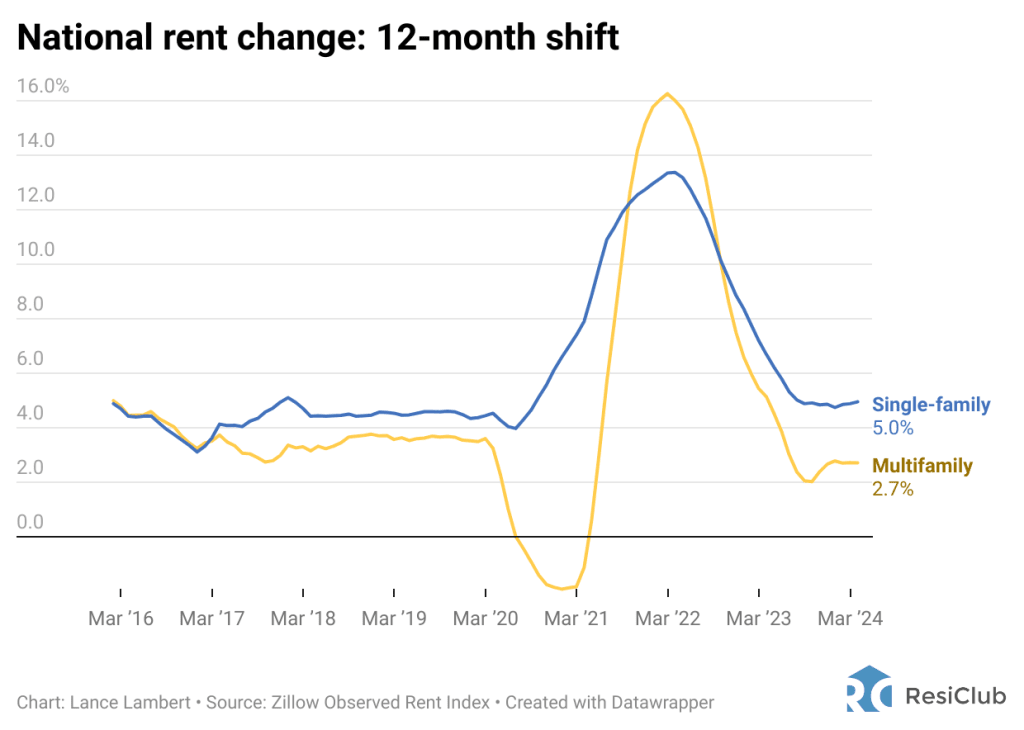The Fed’s housing market dilemma, as told by one chart
According to Zillow, national single-family rents rose 5% from March 2023 to March 2024, while multifamily rents rose 2.7%.
Want more stories from Lance Lambert’s ResiClub in your inbox? Subscribe to the free, daily ResiClub newsletter.
There has been a lot of media attention paid to the cooling rental market. While many observers are correct in noting the softening of multifamily rent growth, with some boomtowns like Austin and San Antonio experiencing outright rent declines, they often overlook a significant aspect: In most markets, rents continue to rise, and, notably, single-family rent growth remains elevated.
According to the Zillow Observed Rent Index, national single-family rents rose 5% from March 2023 to March 2024, while multifamily rents rose 2.7%.
While national rents are still rising, they have decelerated significantly since the peak of the pandemic housing boom, when year-over-year single-family rent growth topped 13.4% in March 2022, and year-over-year multifamily rent growth peaked at 16.3% in February 2022.
The fact that rent growth—in particular, single-family rent growth—remains well above the government’s 2% inflation target, is something that has concerned Fed officials. Some analysts even believe it’s the primary reason that the Fed hasn’t already started to cut interest rates.
“The housing market has remained far more resilient than I would have guessed,” Neel Kashkari, president of Federal Reserve Bank of Minneapolis, said last week while speaking at the Milken Institute Global Conference. “It may take longer for monetary policy to be fully felt by the housing market and by the economy more broadly. So that may guide us towards being more patient in seeing the effects of our policy action.”

Why is the multifamily rental market seeing more softness than the single-family rental market?
A major reason is that many housing markets are seeing a wave of new multifamily rentals, which were financed during the period of ultralow interest rates and are now becoming available. In 2023, the U.S. witnessed a surge in apartment supply, reaching the highest levels since 1987, with construction completed on more than 439,000 units, according to RealPage.
A lot more multifamily housing is coming in 2024.
According to the latest forecast from RealPage, a property management software company in the multifamily sector, 671,953 U.S. apartment units are projected to be completed in 2024. This would represent the highest level since 1974, the year of then-President Richard Nixon’s resignation.
Sunbelt boom markets, like Austin, where the most supply is coming online, are also the very places where multifamily rents are falling.
ABOUT THE AUTHOR
Fast Company
(27)